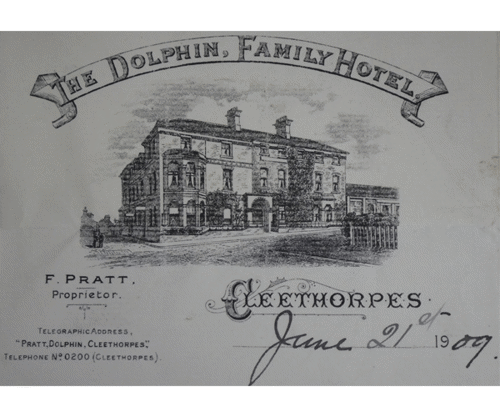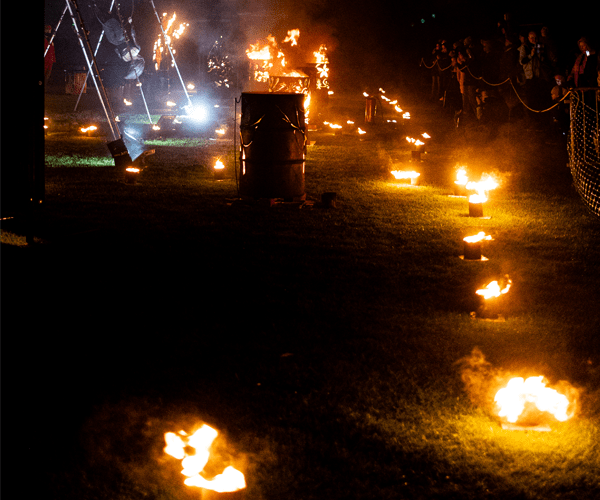Chris
3/21/2025 11:03:16 AM
4 mins read

Nearly 250 years ago, the Dolphin Hotel, or the “Cleethorpes Hotel” as it was known at the time came into being, and it’s having a full make-over, partly thanks to the National Lottery Heritage Fund.
The Dolphin Hotel sits on the corner of Market Place and Alexandra Road in the seaside resort of Cleethorpes, and over the years has played a major role in the history and development of the town.
By the mid-18th century, Cleethorpes was gaining a reputation as a seaside resort Cleethorpes, popular with the wealthy during this period for newly fashionable health reasons to “take the waters”.
At the time, cold bathing for men and women, otherwise known as “taking the waters” was recommended by medical practitioners as beneficial for various physical and mental ailments as well as having curative properties to help with skin conditions, arthritis, and other ailments.
To support this increase in popularity, the Cleethorpes Hotel was built, with a major rebuild (and re-name) in the 1820s as the town in response to growing visitor numbers.
The resort continued to thrive with the advent of the railways, with the Manchester, Sheffield and Lincolnshire Railway arriving in the resort in 1863 (with an extension from Grimsby), the development of the pier and Pier Gardens.
The building has been a hotel, restaurant, oyster bar, café and in more recent years, various nightclubs, and now the current owners are starting a major project to restore the building.
The restoration of the external features is being supported by the National Lottery Heritage Fund, being delivered through the Cleethorpes Townscape Heritage Programme.
The programme has already seen several buildings in the resort having the facades, shop fronts and heritage balconies restored. The Mermaid building on the North Prom is also part of this programme.
The restoration work at the Dolphin includes:
- Restoring all original windows and doors where possible, or replacing with accoya timber sash windows
- Reinstating all chimney stacks in clay brick, style and fired clay pots to match the original
- Restoring cast iron moulded gutters and circular section downpipes
- Restoring all stone detailing
- Restoring original leadwork where possible.
- Restoring original openings and reveals where possible
- Roof repairs
- Demolition of some unoriginal and harmful additions/extensions to the rear of the building
- Removal of all unoriginal electrical fixtures and fittings
- Removal of poor quality render and re-rendering western courtyard elevation
- Full external redecoration in Victorian period colours
Leader of North East Lincolnshire Council, Cllr Philip Jackson, said: “This is one of the really prominent buildings in Cleethorpes that’s been here for hundreds of years. The work planned will really transform this building, and it will be great to see it done. I’d like to thank the building owners for coming forward and being part of this scheme.”
Freeholder, Darren Lince, said: “We’re really pleased to be able to crack on with this project. We’ve got some great plans for the building, and this is the first stage of them – making the building watertight and creating a fantastic exterior, which is much more fitting to the resort.”
The freeholder has appointed Hodson Architects to deliver the project. The work will be carried out by CAG Builders, who have completed heritage works in other areas of the resort as part of the National Lottery funded Townscape Heritage grant programme.
Planning permission is already in place for the work to the building. Hoardings are due to be erected around the building in a phased approached and is due to start in March 2025 with pathway diversions implemented at various times during the 10 months project.
Carol Heidschuster, Townscape Heritage Project Manager, said: “The Townscape Heritage Programme has been a fantastic programme to work on. The key for me is seeing the buildings transformed through the works, and the owners develop a new respect for the architecture and the history of their building. The Dolphin, in particular, is one of the older buildings in the resort, and to see it returned to its Victorian roots will be fantastic.”

A timeline….
The building
Cleethorpes originally consisted of three hamlets, Itterby, Oole and Thrunscoe. The old town street of Itterby is the present Sea View Street and the former market place of Oole is now Market Street.
From the 13th to the late 15th century there was a gradual decline in the fortunes of the small settlements along this coast, due largely to the effects of the silting up of the local waterways. During the 16th century the economy of Cleethorpes comprised of fishing industry and mixed arable farming centred upon the higher till outcrops of the marshland.
By the mid 18th century, Cleethorpes was gaining a reputation as a seaside resort Cleethorpes, popular with the wealthy during this period for newly fashionable health reasons to “take the waters”.
At the time, cold bathing for men and women, otherwise known as “taking the waters” was recommended by medical practitioners as beneficial for various physical and mental ailments as well as having curative properties to help with skin conditions, arthritis, and other ailments.
The first hotel constructed in Cleethorpes was the “Cleethorpes Hotel” in 1760 which was located on the same site as the later “Dolphin Hotel”. (Source: Buildings of England Series, Lincolnshire, N. Pevsner, J. Harris, N. Antram, pub. 1989 (2nd ed), pp. 222-223.)
In the 1820s, the Dolphin Hotel was rebuilt (the three storey section), according to White’s 1826 directory, in response to growing numbers of visitors coming to the resort.
The earliest map found showing buildings on the site is the John & Christopher Greenwood map (1830), and a Plan of the Parish of Clee (for Tithe Commissioners) dated the 30th of June 1843.
By 1843, the site was owned by Richard Thorold Esquire, and occupied by ‘James Wright & Others.’ An interesting reference is found in the Stamford Mercury on the 3rd of June 1814, noting that the Cleethorpes Hotel and Inn is ‘now in compleat repair, elegantly furnished, and ready to be let to any respectable tenant with the usually let herewith’.
The Dolphin Hotel was later extended in 1873/4 to include the left (southerly) section, along with the single storey addition. This is shown in the OS maps, published in 1889. The single storey section was developed into an Oyster Shop and then later the Dolphin Coffee House.
During the 1800s Cleethorpes was the centre of UK trade for its ‘large and cheap’ oysters, reputedly cultivating over 10 million oysters a year. According to one website, at that time the Humber supported one of the most prevalent native oyster populations in the UK, with beds so expansive they were a recognised shipping hazard. This thriving industry was one of the largest employers in the town at the time. According to one website, 150 men worked the fishery at its peak.
In 1939, an advert for the Dolphin boasted of electric lights throughout the hotel and hot and cold running water in all bedrooms. This rivalled nearby hotels like the Cliff or Old Clee Park.
The Dolphin Hotel continued to attract household names as guests, including the comic duo Laurel and Hardy in the 1950s and Norman Wisdom in the 1970s and changed to become a nightclub in 1994.

Social history
The Dolphin Hotel has an important social history too, being used for several significant meetings, including meetings related to the 1842 Act to acquire land along the seafront for the development of a promenade.
The Dolphin Hotel was also used by the Coroner in 1844, and for auctions, and other events, including that held in 1842 by ‘the coast shipwreck association’ who held their annual meeting in Cleethorpes, where after trials and an exhibition of lifeboats and life-saving apparatus, the associated ‘retired to the Dolphin Hotel where they partook of a splendid dinner, which reflected the greatest credit on Mr & Mrs Colton, the landlord and landlady.
Additional custom were also seized upon by the owners of the time. A rather gruesome piece of news in the Lincolnshire Chronicle in 1843 states: “Cleethorpes - On Sunday last as Wm. Page, one of the workmen employed at this inclosure, was walking on the sea shore, he found part of a human hand, which had been washed up by the tide. It appears a man’s right hand from the wrist, containing the thumb and finger nails complete, the skin is white, resembling wash-leather. It was given to Mr. Colton, the landlord of the Dolphin Hotel for the inspection of the curious.” (Lincolnshire Chronicle - Friday 14 April 1843)
The Hotel was used for more pleasant charitable work too. In 1867, the landlord was Mr Pratt, and a snippet from the minutes of the Board of Guardians for Grimsby Union, 6th September 1897: It was announced to the Board that "...Mr Pratt of the Dolphin Hotel, Cleethorpes, was desirous of entertaining the Workhouse children at Cleethorpes." The Board agreed unanimously that the children should be allowed to go.




